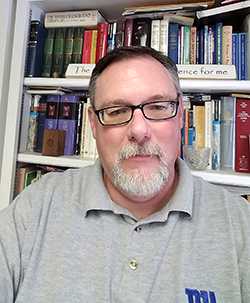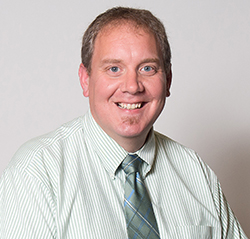
 Instant Connections
Instant Connections
Faith Reformed Church (Midland Park, NJ)

For Scott Nichols, pastor of Faith Reformed Church in Midland Park, NJ, notification technology — a tool that can mass-distribute voice calls, emails and text messages — can really be a godsend from week to week. As he explains, the church uses this technology to send prayer requests, calls to meetings, invitations and Sunday service highlights.
“Almost all the requests run through me,” Nichols explains. “With prayer requests, we generally get calls from the congregation a couple of times a week asking, ‘Can you put my sister on the list?’ ‘Can you put my father on the list?’”
Short devotions are occasionally sent out, as well; this is something Nichols says he hopes to do more of in the future.
“Initially, I’d periodically come across something that struck at me,” he explains. “We’d ‘call’ members and say, Just a quick thought from Pastor Scott. Then, I would say a few words about it.”
Now, the church is a bit more organized; it has created a subgroup in its One Call Now platform for people who want to receive the devotion. “Not everybody wants to listen to me talk for a minute or two on something,” he acknowledges. “Some just want to get their prayer requests, or they want to get the choir announcements.”
On the fundraising side of the equation, the church also uses notification technology to announce monthly mission offerings. “Many times, people would forget,” he points out. “They’d show up on Sunday morning and say, ‘Oh! I forgot about that!’” As a reminder, Nichols and his team now send notifications in advance of the Sunday service — Hey, there will be a building fund offering this Sunday. Remember to use your envelopes!

But, not all communications are routine …
In fall 2012, Hurricane Sandy hit Midland Park, NJ, and its surrounding communities. The church’s notification technology platform would prove to be vital — not only for keeping in touch with members, but also for getting numerous disaster relief efforts up and running quickly.
The community experienced widespread loss of power; many of the phone lines were down. The church was one of the few buildings in Midland Park that actually had power. We were able to use the cellular function, which helped us,” he recalls.
Nichols recalls the very first message that went out to members via notification technology, even while the wind was still howling and the rain was still falling. “It was basically a call making sure everyone was okay,” he says. “We asked everyone to check on their neighbors and get back to us if they needed anything.”
Community meals and phone-charging setups quickly followed. Notification technology proved crucial not only for spreading the word about these services, but identifying volunteers.
“We sent a few messages saying, ‘Hey, we’re going to have a community meal on X night. If you can bring your stuff in, that would be great,’” he recalls. Thanks to this tool and some generous, crock pot-loving church members, the result was a soup station where members of the community could find hot soup any time of the day.
The church even h osted the only Halloween event in the storm-ravaged community — a trunk-or-treat — thanks to notification technology.
osted the only Halloween event in the storm-ravaged community — a trunk-or-treat — thanks to notification technology.
“If we didn’t have the One Call Now app, we probably would have done a lot of driving to people’s houses,” Nichols says. “So, it really was a game-changer.”
Time savings
The time-saving benefits of notification technology are apparent all the time — not just in the event of an emergency. The One Call Now platform actually measures the time savings achieved on an ongoing basis. In Faith Reformed Church’s case, as of press time, it had saved leaders nearly 1,136 hours by making 68,000 attempts to reach 48,000 numbers in its various groups.
Hyde Wesleyan Church (Clearfield, PA)

Two years ago, Stevan Sheets, pastor of leadership development at Hyde Wesleyan Church in Clearfield, PA — new to the staff at the time — walked into the church office to find a yellowed, aging device sitting on a table.
“I knew exactly what it was: a phone tree,” he recalls. “I thought, There’s no way our church still uses that” … until an administrative assistant approached, intending to fire it up. When Sheets asked her if she was really going to use the antiquated machine, she rolled her eyes.
“That told me we had to do better,” he says.
And so they have. Today, the church uses notification technology three to four times a week to keep groups up to date on a specific need or situation.

Better prayer network management. Notification technology is vital for the church’s prayer network management, or prayer chain — and no one knows this better than Pastor Sheets. “I’ve been blessed and pleased to pull up the smart phone app from a hospital, home or elsewhere to instantly relate a prayer need to our team of prayers,” he says.
On the back end, this prayer team was first assembled via a bulletin announcement inviting people to not only provide up-to-date contact information — but also sign up for the prayer team — after the church first implemented One Call Now. From the first announcement, those who signed up were given an idea of what prayer team participation would look like. “It could be a call every day, or it could be a few calls a day if it’s something going on,” Sheets explains.
Prior to that announcement, the church team was able to move all the prayer team contact information from the phone tree device by physically noting all the phone numbers. This data was used to build a new database in One Call Now. Additionally, the entire church database was exported into an Excel spreadsheet and added to the One Call Now platform.
Altogether, the prayer network management process at Hyde Wesleyan Church is now much more simple and streamlined. “For example, just today, my son woke up with a huge pain in his foot,” Sheets said. The doctor decided to run tests for Lyme’s Disease. “When I got back from taking him to the hospital for X-rays, I walked into the office and was updating the girls on where I’d been for the last couple of hours,” he says. “They quickly said, ‘This needs to go out.’”
The office staff formulated a quick message — one that expressed the need but didn’t share an excessive amount of personal detail. “Within minutes, my phone was ringing,” Sheets says.

Fast, effective feedback. Though in a limited capacity, the church has used notification technology to get instant feedback, or to gauge availability or interest, in an event’s specific date and time.
This is particularly useful for communicating, quickly, with the church’s governing board of administration. Consisting of nine members, they are given several options for upcoming meeting dates and asked (“yes” or “no”) if those will work.
Of-the-moment messages. From rained-out softball team practices, to rescheduled small group Bible studies, to canceled children’s ministry events, notification technology enables Sheets and his staff to know that a planned event has been canceled or adjusted in some way.
“It’s a very simple way to communicate with the whole group at one time,” Sheets says. “One shot.”
Time savings achieved
Today — about a year after implementing One Call Now — the platform has saved the church 348 hours by making 20,864 attempts to reach 18,888 numbers in its groups.
Yet, as crucial an outreach mechanism it is, Sheets says members don’t necessarily know what it is … and that’s a good thing. “They know that they get a phone call, and there’s a little chime at the beginning, and it says: ‘A message from _______,’” he says.
At the end of the call, recipients are given the opportunity to opt out.

This is a vast contrast to the phone tree days, when a small group leader would call the church office with a message to get out. “Then, the office would come up with a recorded message and talk into this little box — which sounded awful,” Sheets recalls. In all likelihood, this recorded message would require three or four “takes” to get right, after which point the phone tree would call the small group, one number at time, tying up the church’s phone lines.
Though the church office still handles message disbursement, Sheets says he’s confident he could train someone to use the platform in 10 minutes or less. “That way, they could take over control of communicating with their own group and do themselves.”
— Reporting by RaeAnn Slaybaugh


